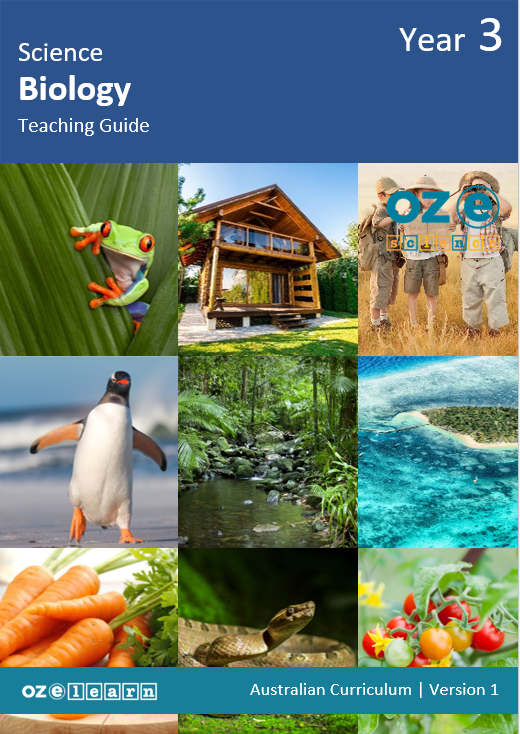Oz-e-science

Teaching resources
Extra Resources
In Lessons 1 to 9, students learn about:
- things that were once living but are now dead, and classifying living, non-living, and once-living things that are now dead
- products that come from plants and classifying products from plants
- products that come from animals and representing products that come from animals
- observing and representing the features of plants and classifying them based on their observable features
- observing and representing the features of vertebrate animals and classifying them based on these features
- observing and representing the features of invertebrate animals and classifying them based on their observable features
- observing, representing, and comparing the biodiversity in a habitat
- choosing and researching a chosen habitat, its biodiversity and describing any products that come from the plants and animals within it
- classifying the plants and animals from a chosen habitat and representing a scientific drawing of one plant and one animal
- completing a final assessment, reporting and communicating.
Progress Tests
Progress tests are conducted after every second lesson, allowing teachers to monitor student understanding of the concepts taught over the past two lessons and to identify where reteaching is needed. The Teaching Guide contains the testing questions, and the Student Workbook has a section where students write their answers and score themselves.
Structured Research Activity
The Structured Research Activity (SRA) for this unit is:
Students create and present a scientific drawing of one of the plants and one of the animals of their choice. The SRA takes place over two lessons so students can apply the Science Understanding and Science Inquiry Skills covered in the unit. Teachers use the Guide to Making Judgements, which is included in the Teaching Guide, to mark the SRA.
End-of-Unit Assessment
The last lesson is the end-of-unit assessment, which has a variety of question formats (e.g. label the diagram, circle the correct answer) to assess student mastery of content from the unit. The end-of-unit assessment is in the Teaching Guide. Teachers copy the assessment and distribute to students at testing time.
Progress tests are conducted after every second lesson, allowing teachers to monitor student understanding of the concepts taught over the past two lessons and to identify where reteaching is needed. The Teaching Guide contains the testing questions, and the Student Workbook has a section where students write their answers and score themselves.
Structured Research Activity
The Structured Research Activity (SRA) for this unit is:
Students create and present a scientific drawing of one of the plants and one of the animals of their choice. The SRA takes place over two lessons so students can apply the Science Understanding and Science Inquiry Skills covered in the unit. Teachers use the Guide to Making Judgements, which is included in the Teaching Guide, to mark the SRA.
End-of-Unit Assessment
The last lesson is the end-of-unit assessment, which has a variety of question formats (e.g. label the diagram, circle the correct answer) to assess student mastery of content from the unit. The end-of-unit assessment is in the Teaching Guide. Teachers copy the assessment and distribute to students at testing time.

